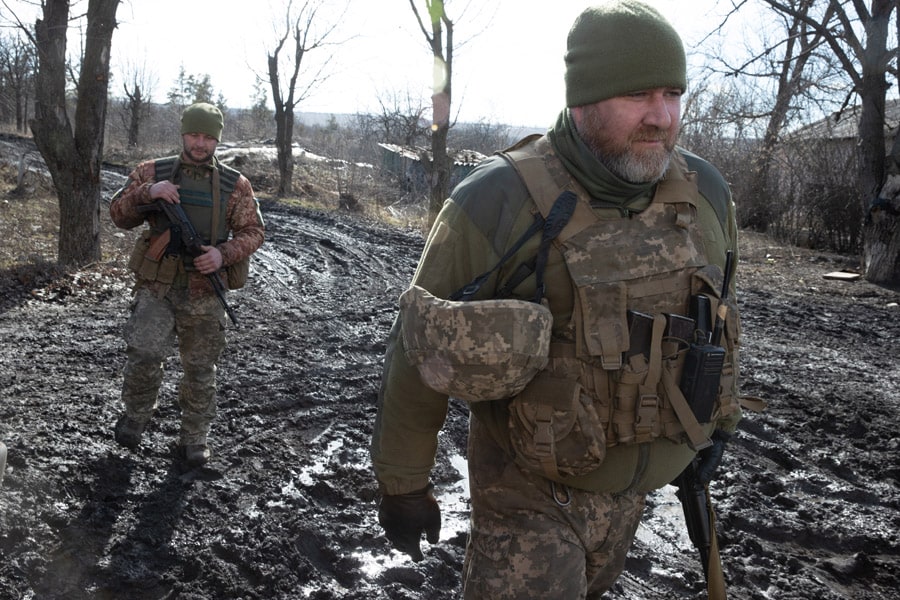
What's at stake for the global economy if Russia invades Ukraine
An outright attack by Russian troops could cause dizzying spikes in energy and food prices, fuel inflation fears and spook investors, a combination that threatens investment and growth in economies around the world
 Ukrainian soldiers in Krymske where mortar attacks from Russian-backed separatists fell through the night, Feb. 19, 2022. President Vladimir Putin of Russia may be looking for fissures in the Western alliance reaction to an invasion into Ukraine, which so far has been united against him. (Tyler Hicks/The New York Times)
Ukrainian soldiers in Krymske where mortar attacks from Russian-backed separatists fell through the night, Feb. 19, 2022. President Vladimir Putin of Russia may be looking for fissures in the Western alliance reaction to an invasion into Ukraine, which so far has been united against him. (Tyler Hicks/The New York Times)
After getting battered by the pandemic, supply chain chokeholds and leaps in prices, the global economy is poised to be sent on yet another unpredictable course by an armed clash on Europe’s border.
Even before the Kremlin ordered Russian troops into separatist territories of Ukraine on Monday, the tension had taken a toll. The promise of punishing sanctions in return by President Joe Biden and the potential for Russian retaliation had already pushed down stock returns and driven up gas prices.
An outright attack by Russian troops could cause dizzying spikes in energy and food prices, fuel inflation fears and spook investors, a combination that threatens investment and growth in economies around the world.
However harsh the effects, the immediate impact will be nowhere near as devastating as the sudden economic shutdowns first caused by the coronavirus in 2020. Russia is a transcontinental behemoth with 146 million people and a huge nuclear arsenal, as well as a key supplier of the oil, gas and raw materials that keep the world’s factories running. But unlike China, which is a manufacturing powerhouse and intimately woven into intricate supply chains, Russia is a minor player in the global economy.
Italy, with half the people and fewer natural resources, has an economy that is twice the size. Poland exports more goods to the European Union than Russia.
©2019 New York Times News Service







